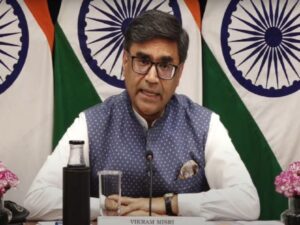Pakistan’s economy faced serious imbalances in 2022: Report
Islamabad [Pakistan], July 8 (ANI): Pakistan’s economy experienced serious imbalances in 2022 as the existing troubles were made worse by an unfavourable external environment, according to Dawn.
Dawn is a Pakistani English-language newspaper.
The State Bank of Pakistan (SBP) on Friday issued the annual Financial Stability Review for 2022 and found that financial system performance and resilience remained firm during the year.
The report said: “The domestic headwinds including the twin deficits, high inflation, catastrophic flooding, delay in the completion of IMF programme reviews as well as the global challenges such as a fast-paced increase in commodity prices and monetary tightening by major central banks in advanced economies, manifested in the deteriorating macroeconomic conditions.”
The central bank, however, maintained that the financial sector showed resilience against these stresses and posted steady performance.
The report said: “The financial sector’s asset base grew by 18.3 per cent in CY22–mainly supported by the banking sector.” The banking sector was the biggest investor in the government papers while the lending to the private sector has touched the bottom.
As per the report, the SBP and the government took various policy steps to address widening imbalances, which included further increases in the policy rate and macro-prudential policies pertaining to consumer financing and administrative measures to contain external imbalance.
“Resultantly, the current account deficit improved towards the year-end while economic momentum weakened. Against this backdrop, the gross domestic product grew only by a meagre 0.29 per cent in FY23,” said the report, as per Dawn.
The FSR highlights the increased volatility of financial markets in CY22. “The banking sector witnessed a strong growth of 19.1pc in its assets. This expansion was mainly driven by investments while advances decelerated,” the report added.
Since deposits observed a notable slowdown, banks’ reliance on borrowings remained substantial, it added.
The credit risk remained contained as the gross non-performing loans (NPLs) ratio lowered to 7.3 per cent by the end of CY22 from 7.9 per cent at the end of CY21, while the net NPLs ratio slightly inched up to 0.8 per cent from 0.7 per cent a year earlier, remaining at one of the lowest levels of last two decades.






